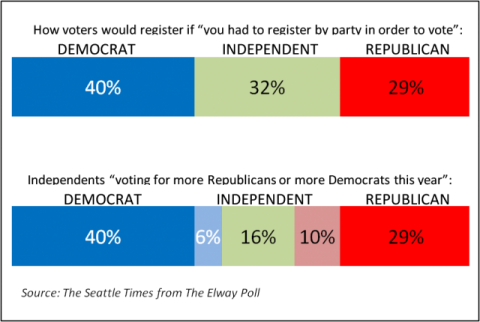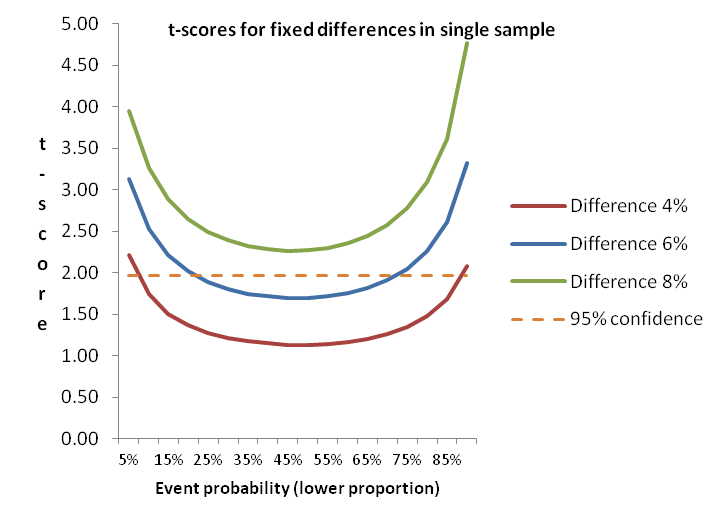An article in the New York Times, “Which Records Get Shattered?“, analyzes the prospects for record-breaking at the 2012 Summer Olympics in London. Nate Silver returns to sports analysis – his old stomping ground before he started the FiveThirtyEight blog which covers election polling.
 |
 |
||
| Michael Phelps, 4x100m relay, Beijing 2008 Olympics | John Nunn winning his place on the US 2012 Olympic team in the 50K racewalk |
The last time I commented on a Nate Silver article, he was predicting winners at the Academy Awards. Nate’s performance that time wasn’t good. He was out of his element in an event that often has upsets.
Besides returning to his roots, Nate is playing it safe by not predicting the outcome of specific events. He took the same tack in an article a couple of weeks ago, “Let’s Play MedalBall!” which gave advice to nations aspiring to achieve Olympic medals.
But let’s return to the topic of Olympic records. I liked the analysis in the article, as well as some aspects of the presentation of the results. Silver calculated percentage improvements in performances between the 1968 Olympics (Mexico City) and 2012 (London). To avoid effects of outliers, the statistical approach incorporated all Olympic performances, not just records. I don’t know if there was any correction made for the 7,300 feet altitude in Mexico City, but any effect would have been eliminated over the 40 years of the data. The calculations were based on time for the most part, but distance was used for field events like javelin, discus, and long jump.
The main conclusion of the analysis is that some types of events have exhibited overall greater performance improvements than others; these are the events where records are more likely be broken. In particular, swimming events improved by an average of 10.3% from 1968 to 2008, while track and field events improved by an average of 4.1%. In fact, in track and field performance has actually declined in a couple of events (javelin and shot-put), but as can be seen easily from the chart these are anomalies. Also notable is that the greatest improvements in track and field are for the longer events including racewalking (who knew?)
Silver offers some reasons for the differences, but I don’t know if any formal correlation analyses were done for his independent variables. He suggests that technology has benefited swimming in particular through better costumes and better pools, whereas runners haven’t had any significant tools to help them over the same period. Also, Nate writes, those from poorer nations have less access to swimming pools which means that the group of potential stars was limited as compared to athletics where little equipment is needed. It seems possible to me that these new stars are added to the pool (pun intended) through economic improvements in their own countries as well as some migration; I haven’t analyzed this – it’s just a theory.
Reporting
The article uses a long horizontal bar chart that works well in the broadsheet format of the New York Times. Silver combines male and female (distinguished by bold), and uses color to identify different types of events, arrayed in order of performance improvements. Nice job!
But how could you convey something similar in a normal style of research report – landscape format PowerPoint, with limited room on the vertical axis?
- Turning the whole thing on its side isn’t going to work well. The length of the text for the events wouldn’t look good along the X axis, even when the text is angled. And using vertical bars might not convey the differences as well, but in any case there are still too many events for the effects to be properly communicated.
- I’d use a version of the chart as an inset, as large as possible, and then pull out subsets to show specific points. This would perhaps work even better. Events could be grouped by type and gender, perhaps separating gender within sports. The current chart makes it fairly clear that female swimming has improved more than male, but with the inclusion of some field events in the mix the point is less clear. Three or four additional smaller charts supporting the main chart should do the trick. And you could hover over the PowerPoint to confirm anything that’s unclear to the people in the back of the room.
Actually the online version of the article uses only a clipped version of the chart as a teaser. The full chart is accessible in a separate browser window.
I hope this post has given you a few ideas about reporting a complex topic. As for records at the 2012 Olympics, it’s too soon to know if the trends seen in the article will continue, as many of the events with the most improvement haven’t yet been held. There have already been some new records in swimming. Other records include weightlifting and archery, which weren’t covered in the article. Personally, I’d like to see a gold medal or two for my homeland, never mind a record. After the disappointment with synchronized diving, even a win in a lower profile sport might boost Britons’ morale. No predictions from me, but I’ll be keeping an eye out for trampoline and rowing (where Katherine Grainger and Anna Watkins have already broken the Olympic record).
Update August 3rd: Grainger and Watkins succeeded, and Britain is now in 3rd place for medals, behind China and the U.S. (showing the home country boost). There have been quite a few Olympic records broken in swimming, consistent with Nate Silver’s analysis. Most of the other events he analyzed are still under way.
Idiosyncratically,
Mike Pritchard
Image sources:
John Nunn Racewalking: By U.S. Army (Flickr: John Nunn wins 50K) [CC-BY-2.0], via Wikimedia Commons
Michael Phelps: By Jmex60 (Own work) [GFDL or CC-BY-SA-3.0-2.5-2.0-1.0], via Wikimedia Commons


